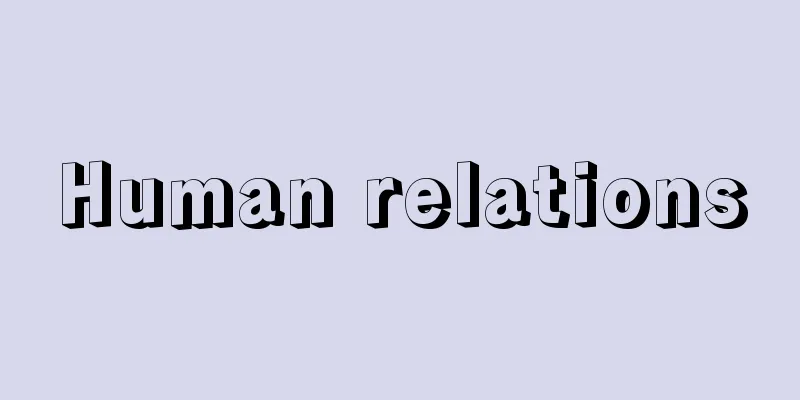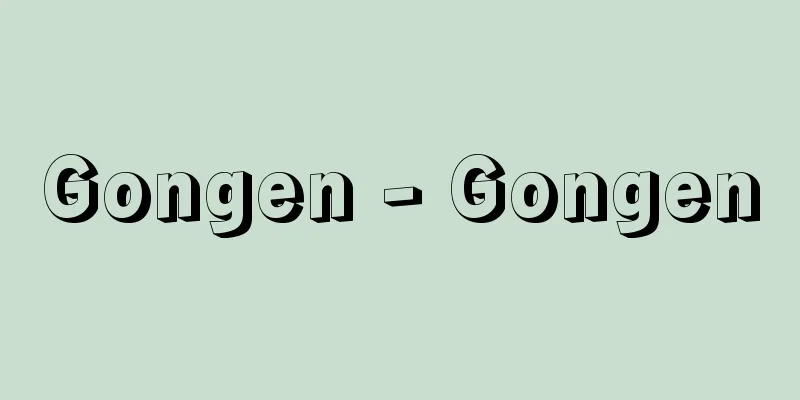Human relations

|
A general term for theories that discovered that various conditions in a business organization are determined by human relationships and systematized the causal relationships between them. Based on the series of Hawthorne Experiments that began in the 1920s, it was theorized by Elton Mayo (1880-1949) and Fritz J. Roethlisberger (1898-1974) of Harvard University, who were the effective leaders of these experiments. The Hawthorne Experiments are a series of four experiments conducted at the Hawthorne Plant of the Western Electric Company in Chicago. The first experiment, called the Lighting Experiment, was started with the intention of clarifying the causal correlation between lighting (a type of work condition, cause) and efficiency (purpose, result), but no clear correlation was found. Therefore, the Relay Assembly Experiment (Second Experiment) was conducted to clarify the correlation between work conditions and efficiency by changing the work conditions under more detailed control. As a result, the hypothesis was reached that there is no direct correlation between the two, and that human sentiment (mental attitudes such as satisfaction or dissatisfaction) seems to affect efficiency. To confirm this hypothesis, a large-scale interview survey (Third Experiment) was conducted, and the propositions that "human behavior should not be judged only by external appearances, but must be understood in a social context including past social experiences and current human relationships at work" (Social Person Hypothesis) and "The cause of human dissatisfaction in business organizations is the violation or destruction of personal or social balance of people in the organization" (Social Equilibrium Hypothesis) were derived. The final experiment to verify this proposition was the bank (part of a telephone exchange) wiring experiment (fourth experiment). This experiment not only confirmed the previous propositions, but also clarified that the organization has a dual structure of formal and informal organization, and that the effectiveness of an organization depends on the informal organization. The outline of the theory of human relations based on the series of experiments described above is as follows. First, a business organization is a social system with technical organizations and human organizations as its subsystems. A technical organization is a system of material elements such as raw materials, tools, machines, and products for technical production purposes. A human organization is a collection of individuals and social relationships between individuals, but individuals enter the workplace with emotions and values, and form social relationships, that is, social organizations. Social organizations consist of formal organizations, which are patterns of interaction determined by rules, and informal organizations, which are other patterns of interaction. Formal organizations are driven by the logic of cost and efficiency, while informal organizations are driven by the logic of emotions. The logic of emotions means that a system of ideals, creeds, beliefs, and values is the standard of action. A business organization with such a structure fulfills two main functions. The first is the economic function of producing goods or services, which is evaluated based on criteria such as cost, efficiency, and profit. The second is the social function, whereby organizational members obtain personal satisfaction, feel good about the organization, and continue to work together; however, it is difficult to determine direct standards for evaluating this function. However, turnover rate, length of service, sickness rate, accident rate, wages, attitudes, etc. can be used as indirect indicators. The realization of economic functions brings about external equilibrium, while the realization of social functions brings about internal equilibrium. External equilibrium means successful adaptation to the market and competition, while internal equilibrium is when the interaction between interdependent feelings and interests is stable enough to satisfy each individual's desires. The combination of internal and external equilibrium realizes social equilibrium, which is the ultimate goal of an organization. Human relations theory criticized scientific management, which had been the dominant paradigm of business management up until that point, in terms of both theory and practice, and proposed new content that went beyond its limitations. In theory, scientific management was based on a simple causal relationship in which improvements in working conditions (cause, means) immediately lead to improvements in productivity (result, purpose), but human relations theory argued that emotions (mediating factors) determined by personal circumstances and workplace conditions (human relations) intervene between the two. These emotions are expressed as morale (motivation to work), and raising morale determines the overall situation, which is where the central issue in practice is sought. In this respect, it contrasts with scientific management, which seeks to improve working conditions as its central issue. This type of practice led to the formation of a new field called human relations management. There is a lot of criticism of human relations theory, but the main criticism is the doubts about the social man hypothesis that emotions are passively determined by the human relations surrounding him. This point has been corrected by behavioral science that adopts the subjective human hypothesis. Due to this trend, human relations theory is also called neoclassical management theory. [Mitsuo Morimoto] "Katsumi Shindo, Hawthorne Research and Human Relations Theory" (1978, Sanno University Press)" ▽ "Toshiko Futamura, editor, "Human Behavior in Organizations" (1982, Yuhikaku)" Source: Shogakukan Encyclopedia Nipponica About Encyclopedia Nipponica Information | Legend |
|
経営組織の諸状況が人間関係によって規定されることを発見し、その間の因果関係を体系化した理論の総称。1920年代に始まる一連のホーソン実験を基盤とし、この実験の実質的指導者であったハーバード大学のメーヨーElton Mayo(1880―1949)やレスリスバーガーFritz J. Roethlisberger(1898―1974)らによって理論化された。 ホーソン実験は、シカゴにあるウェスタン・エレクトリック社ホーソン工場において行われた四次にわたる実験の総称である。第一次実験は照明実験とよばれ、照明(作業条件の一種、原因)と能率(目的、結果)との間の因果的相関を明らかにする意図で始められたが、明確な相関を発見できなかった。そこで、もっと詳細なコントロールのもとで作業条件を変化させて、作業条件と能率の相関を解明するため、リレー(継電器)組立作業実験(第二次実験)が行われた。その結果、両者間には直接の相関はなく、人間の心情sentiment(満足・不満足のような心的態度)が能率を左右するらしいとの仮説が得られた。この仮説を確認するため、大掛りな面接調査(第三次実験)が実施され、「人間の行動は外部に現れたものだけから判断されるべきではなく、過去の社会経験と現在の職場の人間関係を含む社会的脈絡のなかで理解されなければならない」という命題(社会人仮説)と、「経営組織における人間の不平不満の原因は、組織における人々の個人的均衡ないし社会的均衡の侵害ないし破壊にある」との命題(社会的均衡仮説)が導出された。この命題を実証するための最後の実験が、バンク(電話交換機の一部)配線作業実験(第四次実験)である。この実験は、これまでの諸命題を確証したばかりでなく、組織が公式組織と非公式組織のいわば二重構造からなっていること、組織の有効性は非公式組織によって左右されることを明らかにした。 以上のような一連の実験を踏まえた人間関係論の骨子は、次のようなものである。まず経営組織は、技術的組織と人間組織を下位システムとする一つの社会的システムである。技術的組織は、技術的生産目的のための原材料・工具・機械・製品等の物的要素のシステムである。人間組織は、個人および個人間の社会的諸関係の集合であるが、個人は心情と価値を抱いて職場に入り、社会的諸関係すなわち社会的組織を形成する。社会的組織は、規則等によって定められた相互作用のパターンである公式組織と、それ以外の相互作用のパターンである非公式組織からなっている。公式組織は費用および能率の論理によって、また非公式組織は心情の論理によって、それぞれ動いている。心情の論理とは、理念・信条・信念・価値のシステムが行動基準になっていることをいう。このような構造をもつ経営組織は、二つの主要機能を果たしている。第一は、財またはサービスの生産という経済的機能であり、それは費用・能率・利益等の基準で評価される。第二は、組織構成員が人間的満足を獲得し、組織に好意を抱き、協働を継続し続ける社会的機能であるが、この機能については、直接的評価基準を求めることが困難である。しかし、間接的指標として離職率・勤続期間・疾病率・災害率・賃金・態度等を用いることができる。経済的機能の実現は外部的均衡を、社会的機能の実現は内部的均衡をもたらす。外部的均衡は、市場・競争についての適応の成功を意味し、内部的均衡は、相互依存の関係にある心情と利害の相互作用が各人の欲求を満足させうる状態に安定していることである。内外均衡が相まって、組織の究極課題である社会的均衡が実現する。 人間関係論は、それ以前の経営管理の支配的パラダイムであった科学的管理法に対し、理論と実践の両面で批判を提出し、その限界を超える新内容を提起するものとなった。理論面でいえば、科学的管理法は、作業条件の改善(原因、手段)がただちに生産性の向上(結果、目的)をもたらすとの単純な因果関係にたっていたが、人間関係論は、両者の間に個人的事情と職場の状況(人間関係)によって規定される心情(媒介要因)が介在するとした。この心情はモラール(勤労意欲)となって現れるから、モラールの高揚が全体状況を左右することになり、そこに実践上の中心課題が求められることになる。この点で、作業条件の改善に中心課題を求める科学的管理法と対照的である。このような実践は、人間関係管理と称される新分野を形成することになる。 人間関係論にも多くの批判があるが、その中心は、心情が彼を取り巻く人間関係によって受動的に規定されるとする社会人仮説への疑問である。この点は、主体的人間仮説をとる行動科学によって改められるようになる。このような流れから、人間関係論は新古典的管理論ともいわれるのである。 [森本三男] 『進藤勝美著『ホーソン・リサーチと人間関係論』(1978・産業能率大学出版部)』▽『二村敏子責任編集『組織の中の人間行動』(1982・有斐閣)』 出典 小学館 日本大百科全書(ニッポニカ)日本大百科全書(ニッポニカ)について 情報 | 凡例 |
>>: Human relations - ningen kankei (English spelling)
Recommend
Mukhali (English spelling)
?-1223 A meritorious official who founded the Mong...
Wedge-shaped brick
…Bricks were widely used in the ruins of palaces ...
Narusawa [village] - Narusawa
A village in Minamitsuru County, at the southern t...
Universal gravitation - banyuuinryoku (English spelling) universal gravitation
This is the gravitational force that always acts ...
Complete life table
A life table. It is compiled by the Ministry of He...
Cadmium red
A solid solution of cadmium sulfide (CdS) and cadm...
Artusi, P. - Artusi
…In this way, Italian cuisine played a pioneering...
Sea and land breeze
A type of local wind system whose direction rever...
Eskimo-type kinship names - Eskimo-type kinship names
...That is, (1) Hawaiian-style kinship nomenclatu...
Cholesteric
...Their molecular formulas are shown in Figure 1...
National Conference for the Prohibition of Nuclear Weapons and Peace Building - Kakuheikinshiheiwensetsukokuminkaigi
Its abbreviation is Nuclear Ban Conference. It was...
Otsu pitching - Otsunagubushi
...The melody line called "Tobushi" in ...
mazurek
...Dance. Originally called mazurek (Polish), it ...
Phytelophas marcrocarpa (English spelling) Phytelophasmarcrocarpa
…The leaves are used for roofing, and starch is e...
Sea trials - Kaijo Shiunten
…The equipment is assembled in the factory as muc...









